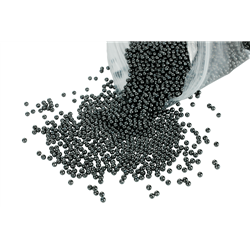Static grass and fine scatter are both commonly used in scale modelling and model railway projects to create...
No products
Product successfully added to your shopping cart
There are 0 items in your cart. There is 1 item in your cart.
Search Tips
Christmas and New Year
We are dispatching orders every weekday apart from Christmas Day, Boxing Day and New Year's Day.
If you order is time critical, select next day delivery at checkout.
The shop in Sandown is closed from 25th December, reopening on 30th December.
How can I add sufficient nose weight to my model aircraft without collapsing the nose wheel ?
Adding sufficient nose weight to a model aircraft can be a delicate task, too little can result in a tail sitter, whilst too much can result in collapsing the nose wheel. Here are a few tips to help achieve the right balance (pun intended):
- Determine the required nose weight : The amount of nose weight needed depends on the specific model aircraft and its balance requirements. Many manufacturers will offer a suggested nose weight in the model instructions.
- Use dense materials : Choose dense materials for the nose weight to maximize the weight while minimizing the space needed. Lead is commonly used for this purpose, as it is heavy and can be easily shaped. Lead fishing sinkers or small lead weights can be used. Additionally, many manufacturers create ballasting solutions based on small metal spheres that can be poured into a space and will self-level to achieved an effective solution.
- Distribute the weight : Instead of using a single large weight, distribute the weight across multiple smaller ones. This will help achieve a better balance and avoid putting excessive pressure on the nose wheel. Smaller sized weights or ballasting solutions utilising metal spheres are highly effective at creating an ideal weight distribution.
- Secure the weights : Once the appropriate weight configuration has been determined, secure it in the nose section of the aircraft. Epoxy or PVA glue are both good options for attaching the weights securely. Be careful not to use too much glue or epoxy, as it can add unnecessary weight and can end up warping the plastic resulting in a misshapen profile. Bluetac or plasticine can also be useful for this task.
- Test the balance : Where possible test the balance of the intended solution before final assembly of the fuselage. Rubber bands or masking tape can be used to temporarily hold the fuselage together at this point. The assembly can then be balanced on a finger or supported on a flat surface, with the supports approximating the location of the undercarriage. This can be used to check the solution whilst allowing adjustments if necessary.
- Consider the overall picture : Testing the weights in the fuselage can offer a good indication but also remember other factors such as the wings, tailplane and engine modules may also needed to be factored in. One consideration at this point is to determine if additional weight can be installed in the wings, engine mounts or wing mounted assemblies such as fuel tanks. These may offer alternate locations for weights to be included without causing issues for the nose wheel assembly.
Remember, it's important to strike a balance between adding sufficient nose weight and avoiding excessive pressure on the nose wheel. By following these tips and adopting a methodical approach with appropriate testing, it should be possible to achieve the ideal solution.
Click here to receive the tips weekly in your mailbox. You can unsubscribe at any time.









